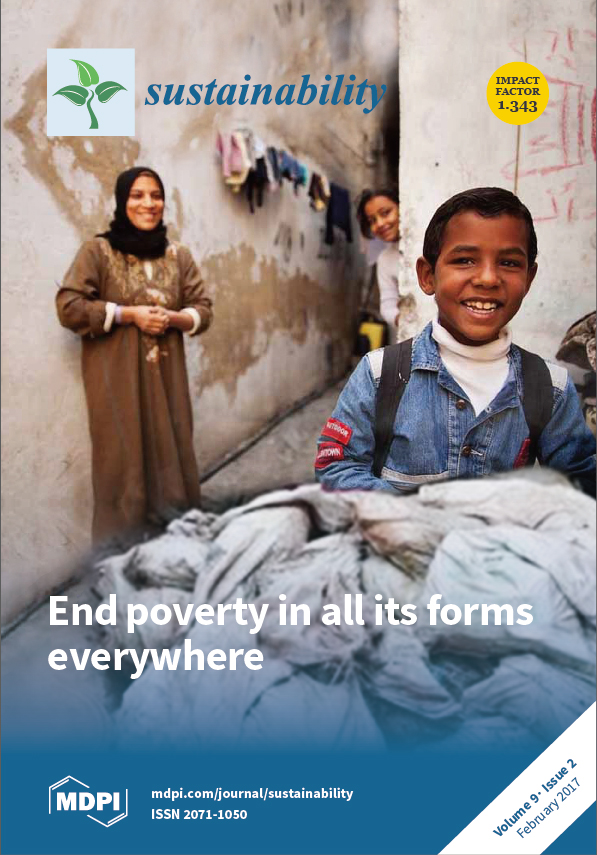The purpose of this study is to determine the mix proportions that can minimize CO
2 emissions while satisfying the target performance of porous vegetation concrete. The target performance of porous vegetation concrete was selected as compressive strength (>15 MPa) and void ratio (>25%). This study considered the use of reinforcing fiber and styrene butadiene (SB) latex to improve the strength of porous vegetation concrete, as well as the use of blast furnace slag aggregate to improve the CO
2 emissions-reducing effect, and analyzed and evaluated the influence of fiber reinforcing, SB latex, and blast furnace slag aggregate on the compressive strength and CO
2 emissions of porous vegetation concrete. The CO
2 emissions of the raw materials were highest for cement, followed by aggregate, SB latex, and fiber. Blast furnace slag aggregate showed a 30% or more CO
2 emissions-reducing effect versus crushed aggregate, and blast furnace slag cement showed a 78% CO
2 emissions-reducing effect versus Portland cement. The CO
2 emissions analyses for each raw material showed that the CO
2 emissions during transportation were highest for the aggregate. Regarding CO
2 emissions in each production stage, the materials stage produced the highest CO
2 emissions, while the proportion of CO
2 emissions in the transportation stage for each raw material, excluding fiber, were below 3% of total emissions. Use of blast furnace slag aggregate in porous vegetation concrete produced CO
2 emissions-reducing effects, but decreased its compressive strength. Use of latex in porous vegetation concrete improved its compressive strength, but also increased CO
2 emissions. Thus, it is appropriate to use latex in porous vegetation concrete to improve its strength and void ratio, and to use a blast furnace slag aggregate replacement ratio of 40% or less.
Full article





